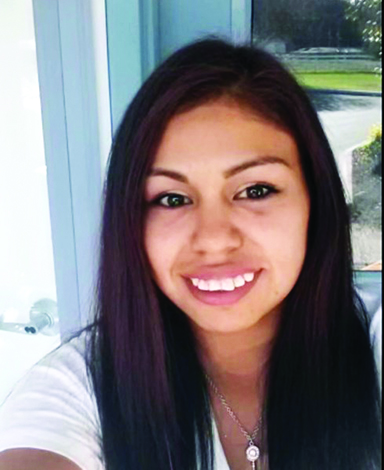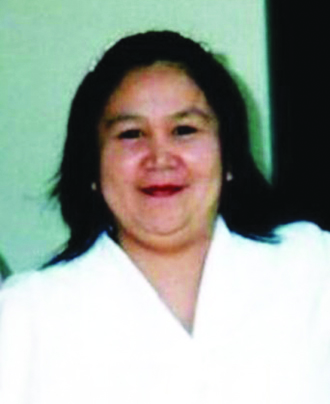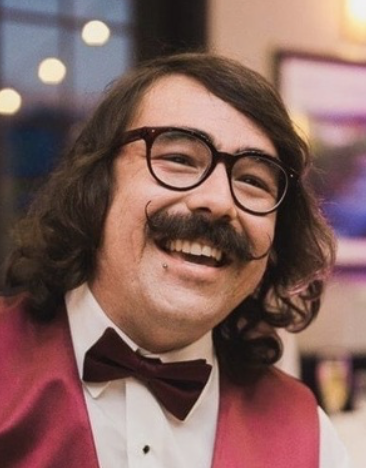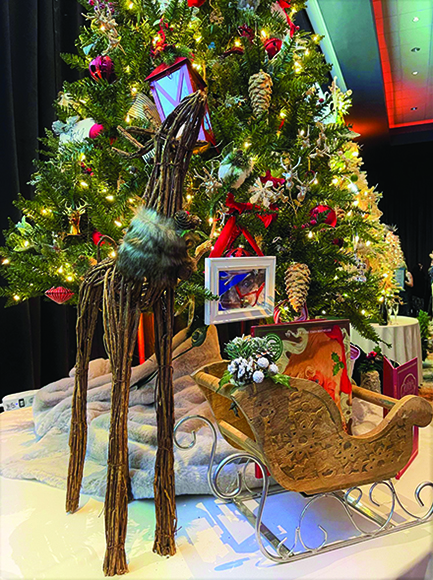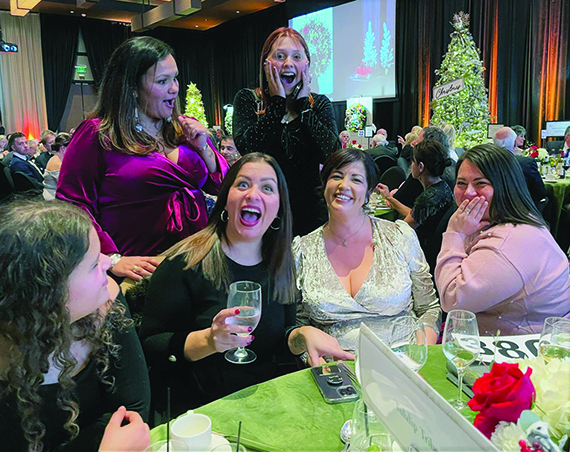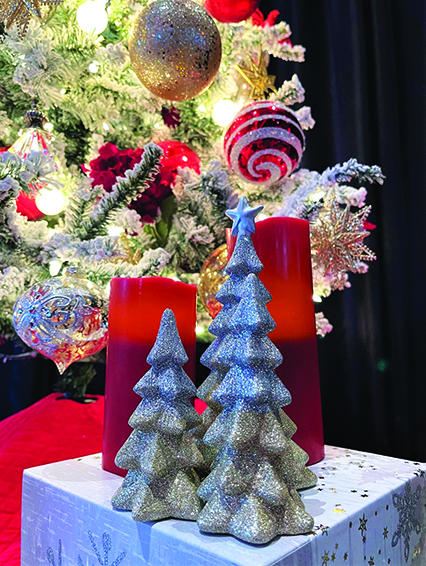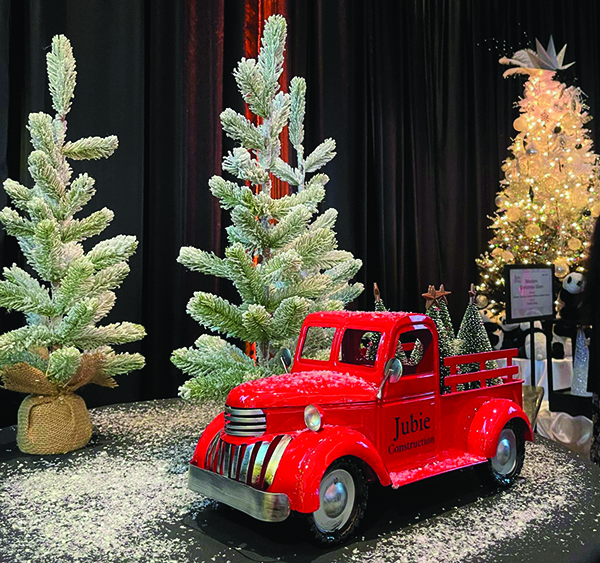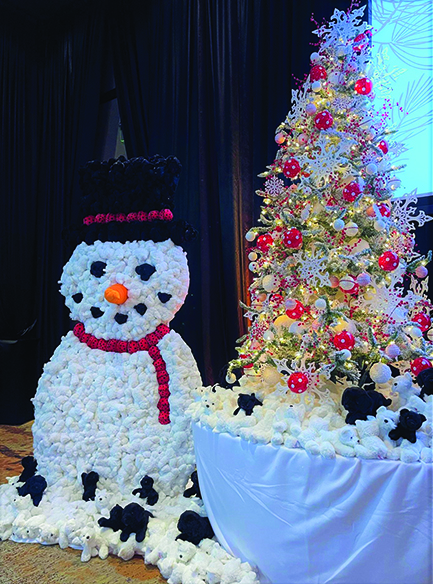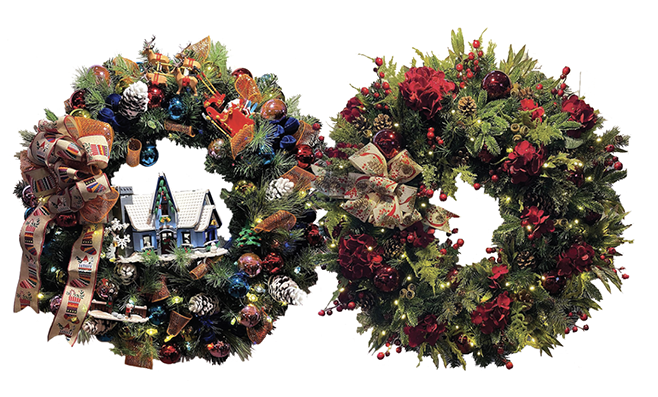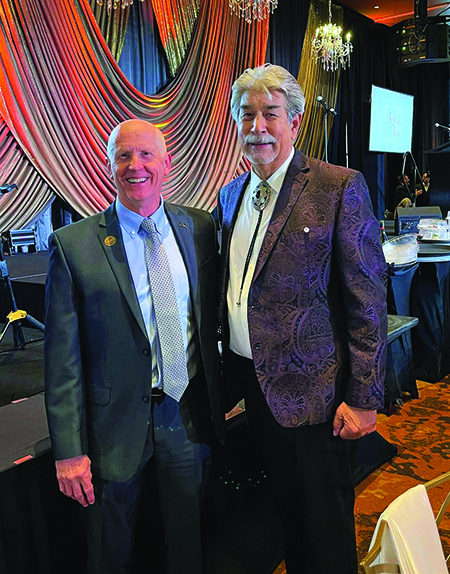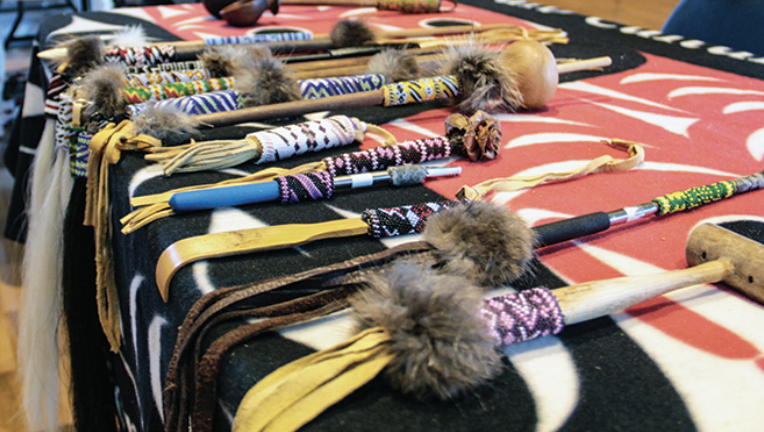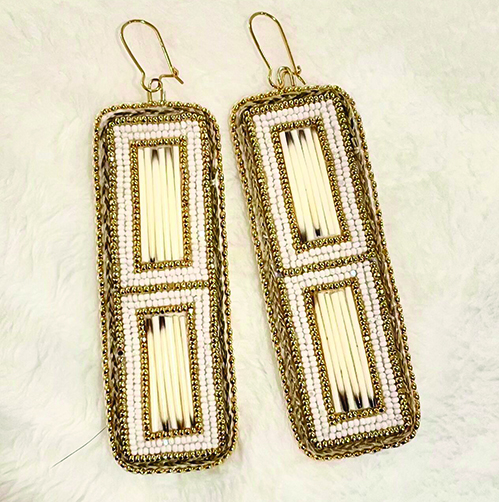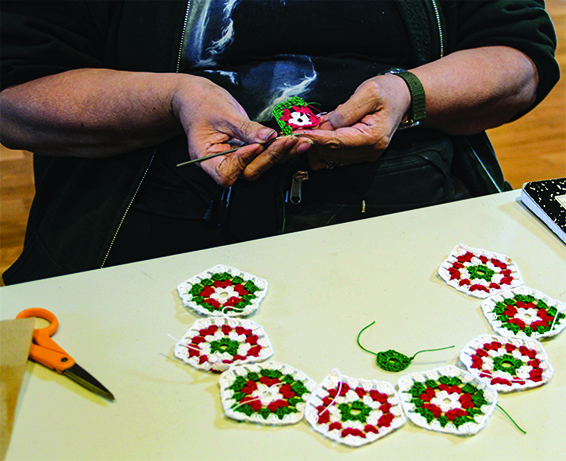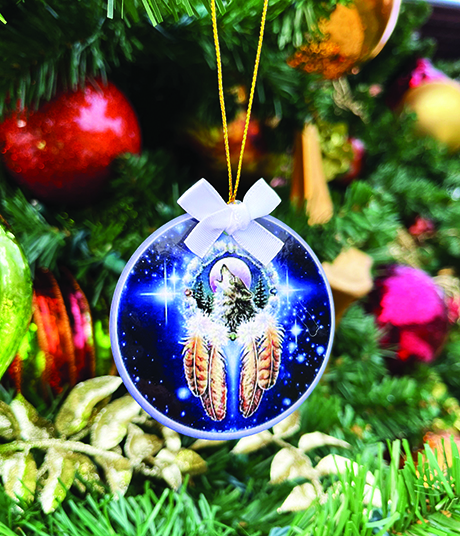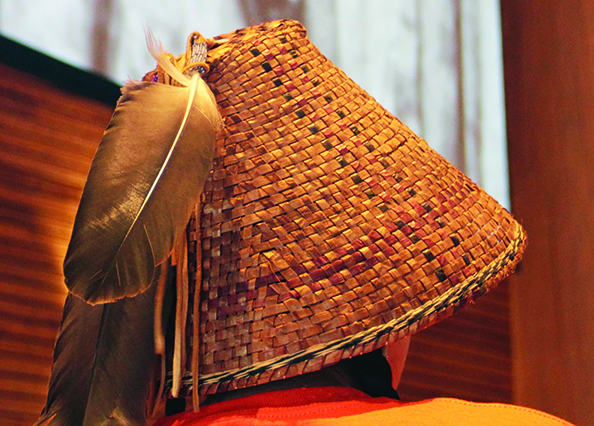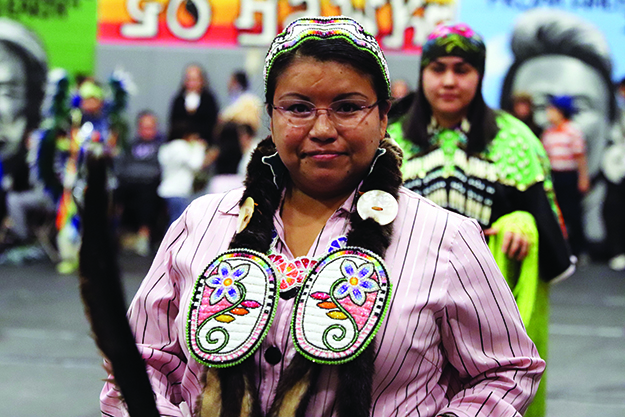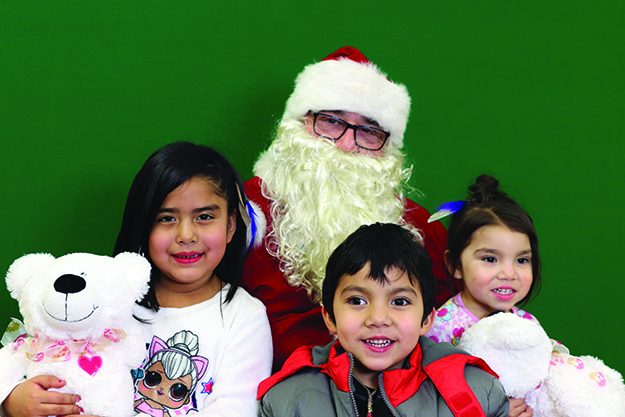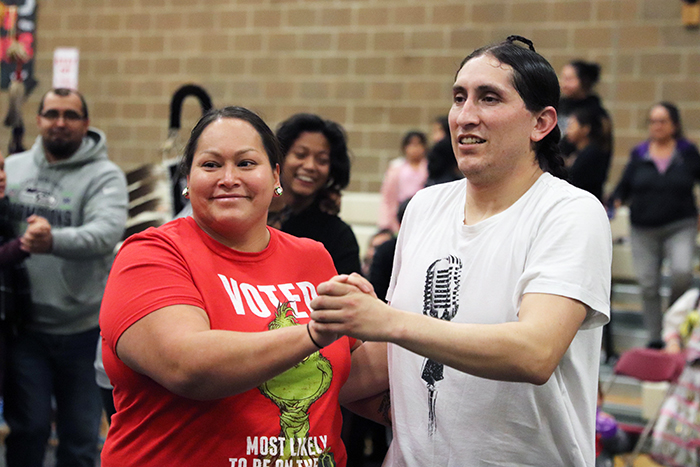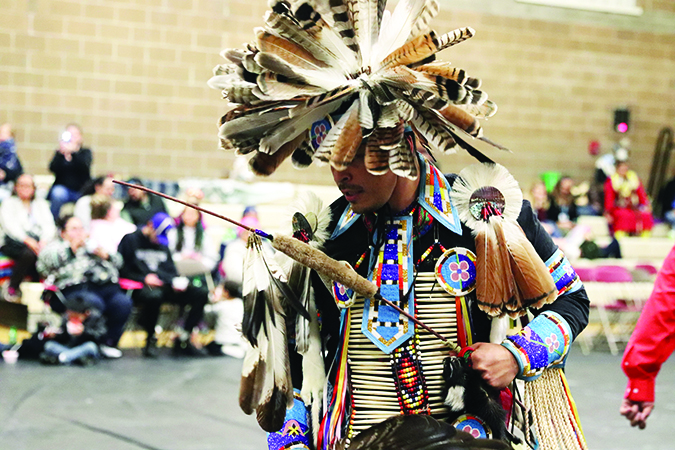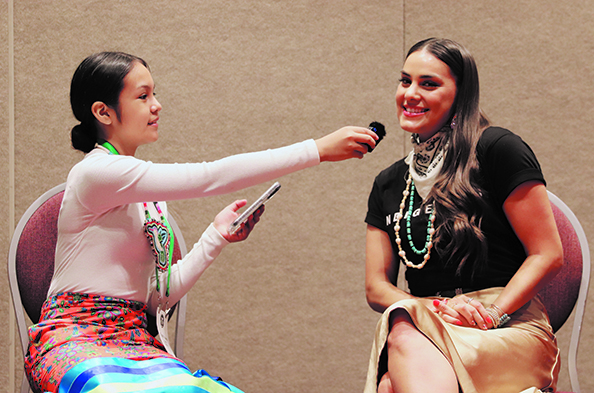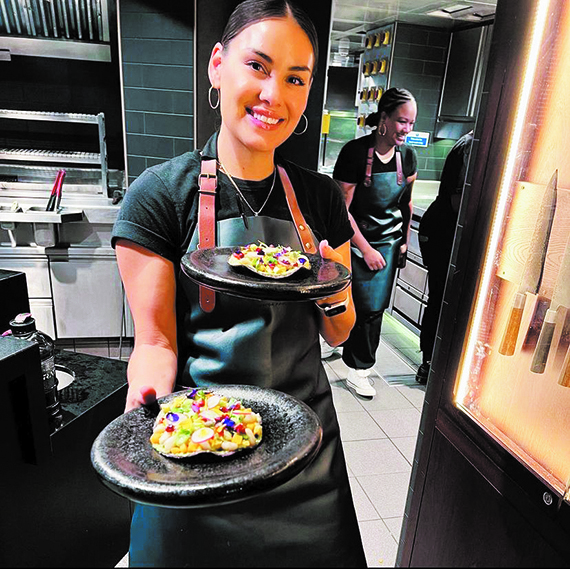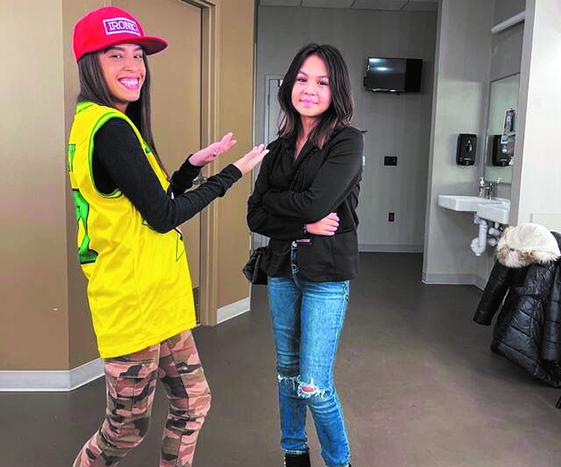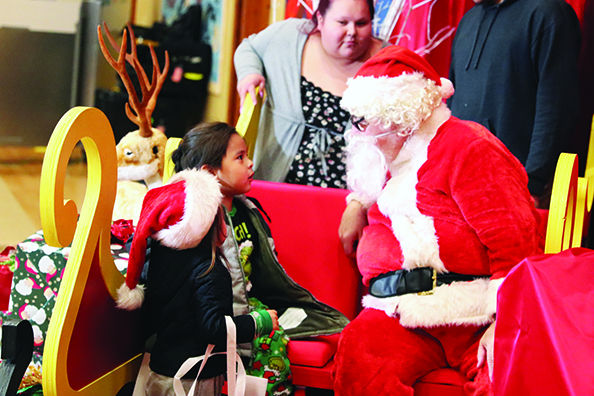
By Kalvin Valdillez, Tulalip News
It was a full house at the Don Hatch Youth Center on the evening of December 12th as families gathered for some Christmastime fun during the Tulalip Education Division’s Holiday Celebration. Loaded with fun holiday-themed activities, the youth beamed with excitement and joy as they visited the many stations at the celebration. And to help set the yuletide vibe, DJ Monie kept the crowd amped throughout the night by playing all the Christmas classics and some new mixes as well.
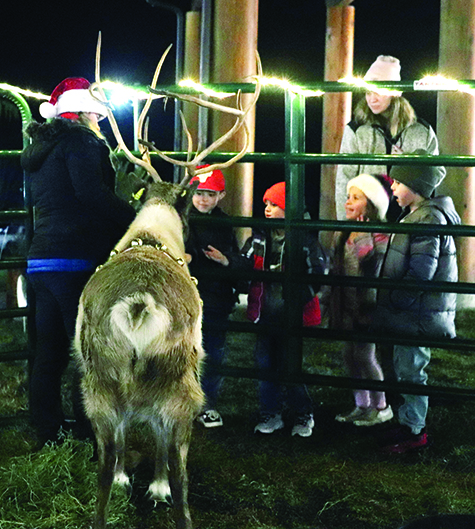
“We went with a little bit of a variety,” said Danielle Fryberg, Tulalip Education Division Executive Assistant and lead organizer of the Holiday Celebration. “We had cookie decorating, ornament making, stocking coloring; there was a hot cocoa station and everyone really loved that. I think it’s important to have holiday events for the kids. This is a fun time for us to come together as a community and see each other and be with our friends and family.”
A beautiful Christmas dinner was served at the Greg Williams Court. And while attendees enjoyed their meal, they were treated to the beloved Christmas flick, Elf, on an extra-large projection screen. And because the celebration was a three-hour event, Elf was followed by another holiday comedy, Christmas Vacation.
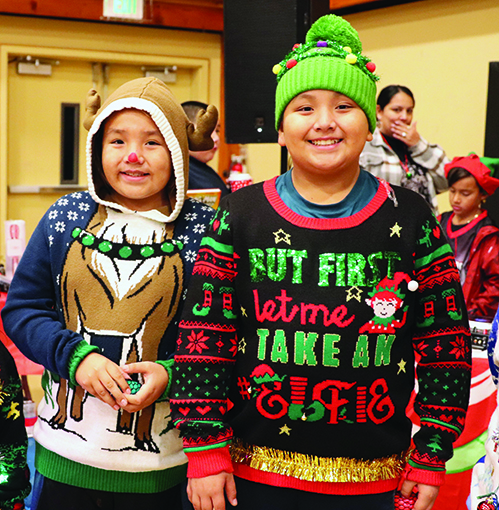
“It’s really important to bring people together to spread holiday cheer, be one as a community, and do fun activities together, and enjoy each other’s time and company,” expressed Jessica Bustad, Executive Director of the Tulalip Education Division.
On the grassy area between the Greg Williams Court and the teen center, Santa Clause parked two of his reindeer before he went inside to take photos with all the families for the evening. Kids of all ages were astounded to see the reindeer adorned with sleigh bells, and they quickly formed a line to meet, pet, and feed the reindeer. Many of the youngins made multiple trips to check on the magical mammals, perhaps to make sure they didn’t fly off to the North Pole without jolly old St. Nicholas. And speaking of Santa, he had quite the busy trip to Tulalip this year as close to one-hundred boys and girls shared a conversation with him before posing for a photo in his sleigh.
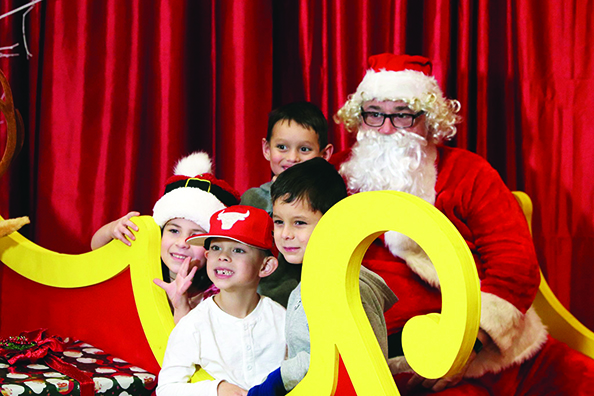
The Education Division also hosted a book fair during the Holiday Celebration, and everyone in attendance had the opportunity to select a book to take home and read over the upcoming winter break.
“Anytime the bookfair is here, I get super excited to watch all the kids pick out books,” Jessica stated. “We love books. We’re the education division; we love learning, and we feel it’s important for every child to have books in their homes. Winter break is coming up and our hope is that they’ll have some books at home during the break that they can read. Reading is fun and we need the parents and adults of the community to help the children feel that.”
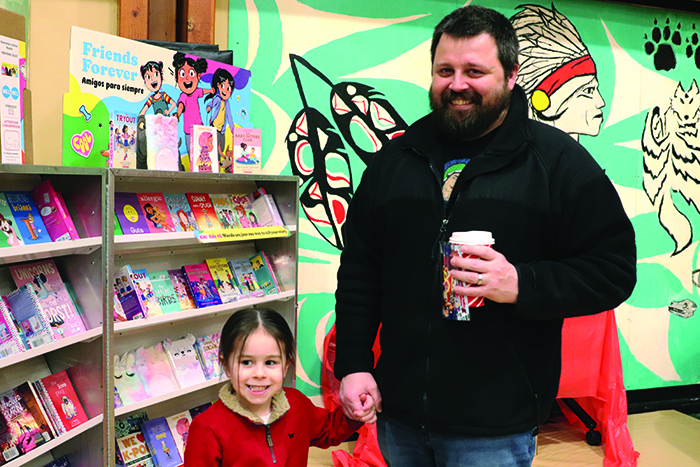
Everybody who was in attendance of the Holiday Celebration dressed in festive attire; some wore Christmas PJs, others wore Santa hats, but nearly everyone wore an ugly Christmas sweater. At the midway point of the party, DJ Monie announced the start of an ugly Christmas sweater contest. Split into three categories; kids, teens, and adults, the contest helped showcase the creativity and humor of the contestants. Some of the contestants took the time to personalize their sweaters by adding additional decorations, and others simply wore a sweater featuring their favorite characters such as the Grinch, Stitch, and Buddy the elf.
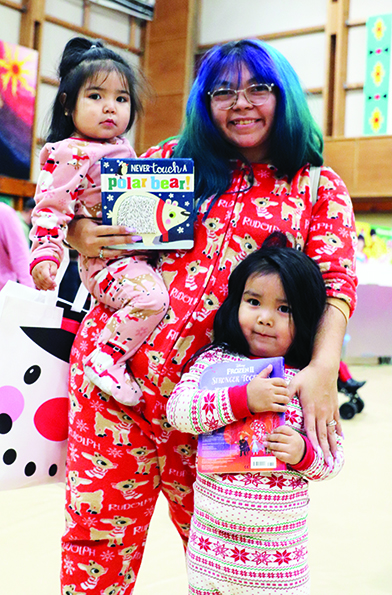
“That was fun and exciting,” said Ugly Sweater Contest participant, Sandy Pitchforth. “It was great to see all the kids who participated. The highlight of the night for me was all the crafts that were available for the children, and just being able to do things together. It was fun and we’re looking forward to the next events to happen.”
The evening ended with a raffle giveaway and each winner walked away with the gift of their choosing ranging from toys and fishing poles, to air fryers and Bluetooth speaker systems. The Tulalip Education Division’s mission to spread holiday cheer was a great success as the kids left with gifts in their hands, smiles on their faces, and memories to last a lifetime.
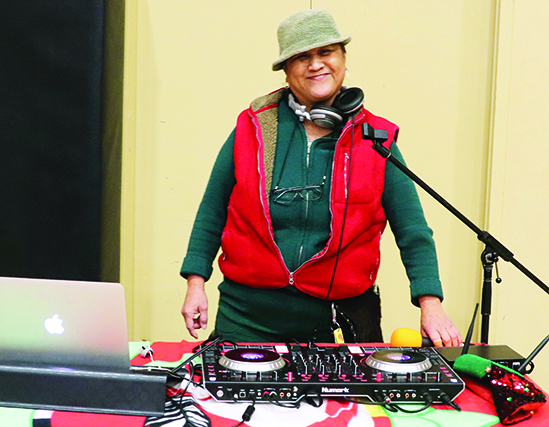
“I won a raffle prize and chose a speaker because I love music,” young Sophia Williams excitedly shared. “We love playing Christmas music loud and I’m really excited to use it for that. My little cousin also won and picked a volleyball for some reason. My favorite part tonight was making a stocking, hanging out with my friend, and just having a good time. This [Holiday Celebration] helps make the community a better place for us all.”
The Education Division has plenty more Christmas joy to spread and have a number of events coming up including the Tulalip Youth Council’s Winter Break Kick-Off and the Holiday Powwow. They also have a Christmas Break schedule for those youth (grades 6th-12th) who wish to take part in a movie outing on 12/19, Ice Skating on 12/20, a Christmas Party on 12/21, and Christmas Bingo on 12/22. For more details, please contact the teen center at (360) 716- 4909.
Said Jessica, “The Tulalip Education Division wants to send love and prayers out to our community. We hope everyone has a safe and fun winter break. And we encourage you to keep learning, keep growing your brains, and have fun doing it.”
